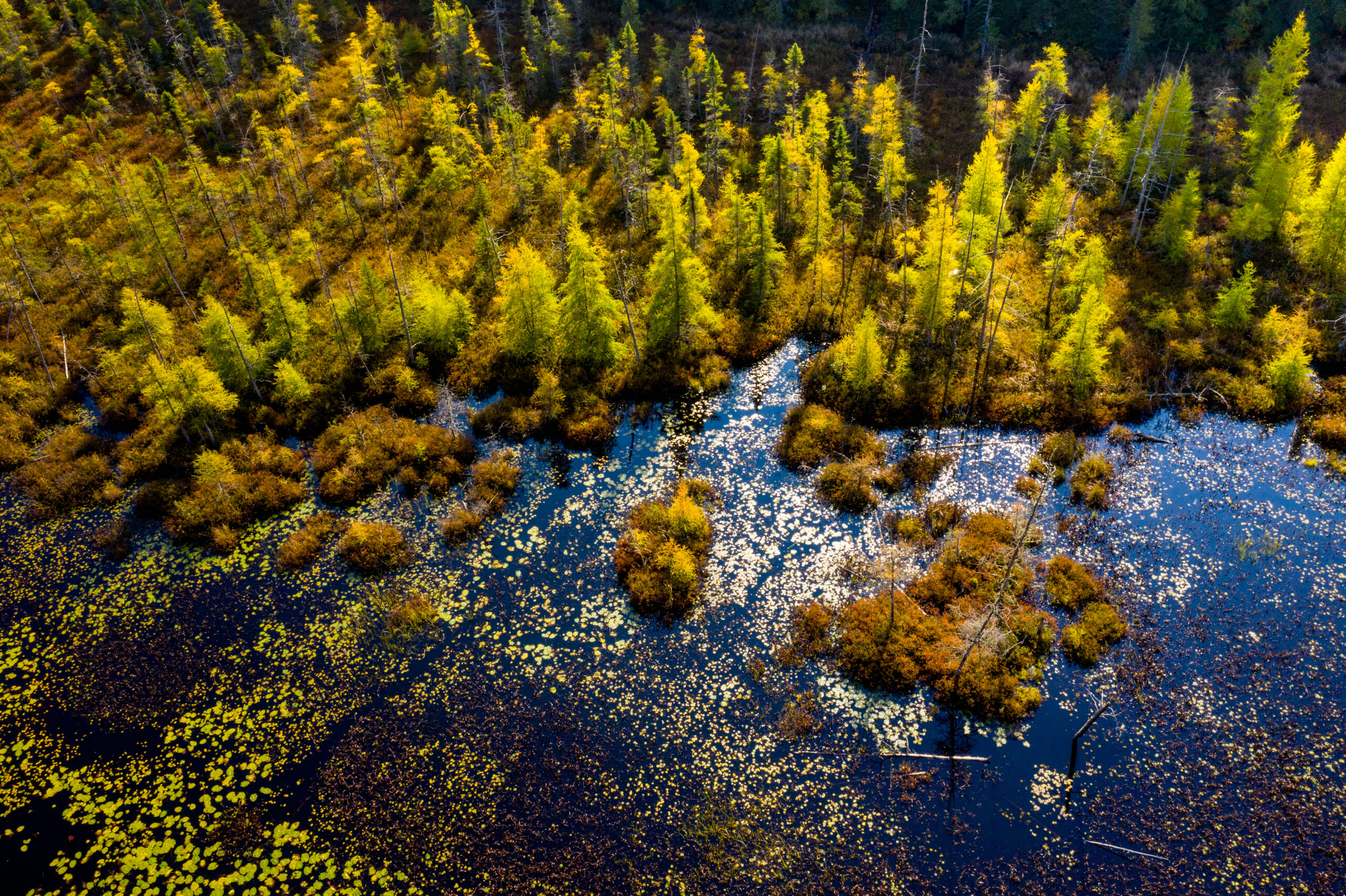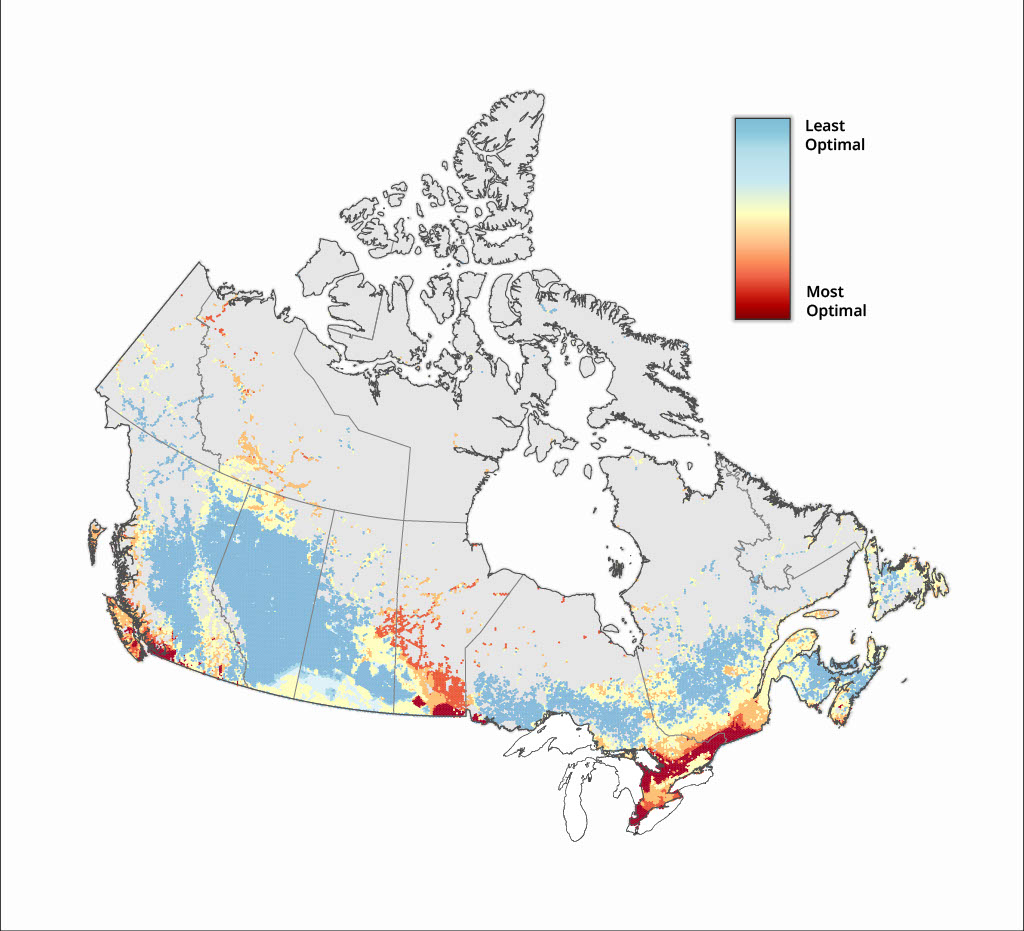How do we restore lost habitats? Our new restoration analysis points the way forward
Not counting towns and cities, did you know that around 50 million hectares of land in Canada — an area bigger than Yukon Territory — has been “converted” for human uses such as roads, energy infrastructure and, predominantly, agricultural lands?
These lands are no longer available as habitat for wildlife and also have a significantly reduced ability to absorb and store ecosystem carbon.

To figure out which areas of Canada to restore, WWF-Canada researchers and our academic partners first mapped out which lands in Canada have been converted to human uses. To prevent the possibility of human displacement, they removed urban areas from the analysis
(Degraded lands — a forest with some trees cut down or a polluted wetland — can and should also be considered for restoration. However, WWF-Canada’s new study only considered converted lands due to a lack of available data or a clear definition of degraded lands.)
They then looked at which converted lands have the greatest potential to provide benefit for both biodiversity and climate, if restored to their natural states — which areas could provide maximum carbon storage and habitat for wildlife.

The answer comes in the form of a just-released study that identifies 3.9 million hectares of converted land — primarily in southern Ontario and Quebec and southern Manitoba — where restoration on converted lands could best deliver both of these benefits.
However, the restoration priority map identifies viable areas for restoration in all provinces and territories.
These findings are particularly important because the Canadian government recently committed to a 30 percent restoration target under the Kunming-Montreal Global Biodiversity Framework, though much background work remains to be done before this becomes operational.
But this is only one the start of the process
A key part of moving forward will also be ensuring that goals and plans for restoration are co-developed with the consent and support of Indigenous and local communities in ways that reflect their priorities and knowledge. And to avoid food security impacts, restoration efforts should focus on marginal lands that are not currently being used.
Find out more about our new study, Restoring Lost Habitats in Canada.
WWF-Canada’s national restoration analysis was completed with partners from WWF-US, University of Victoria, University of Northern British Columbia and McMaster University, and is generously supported by Maple Leaf Foods Inc.

